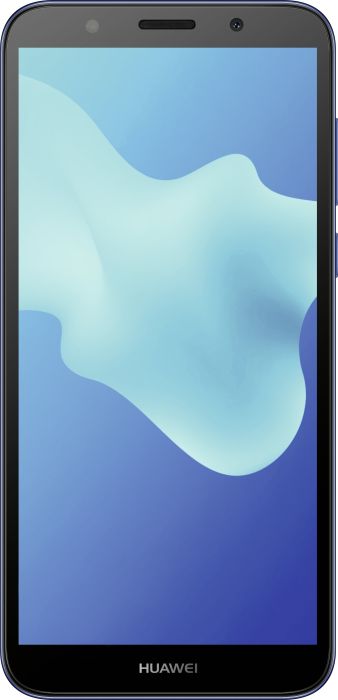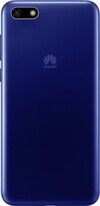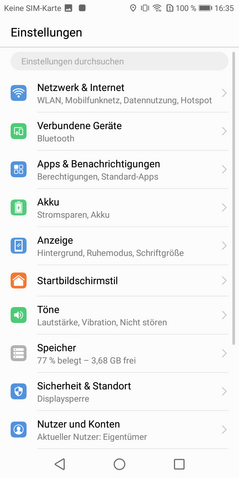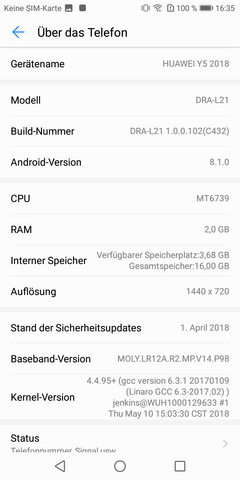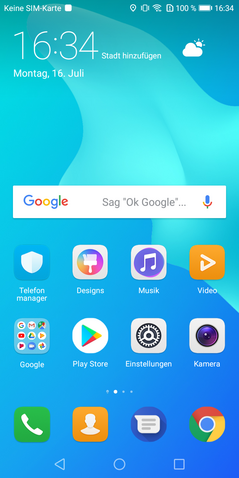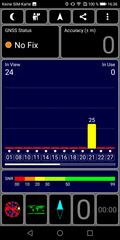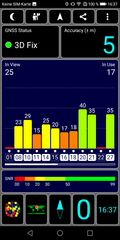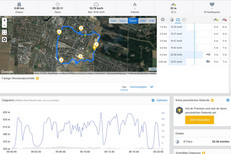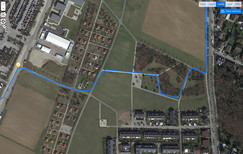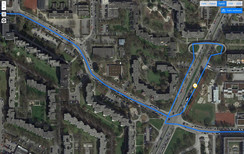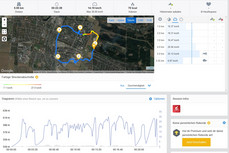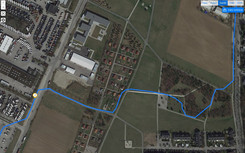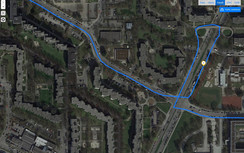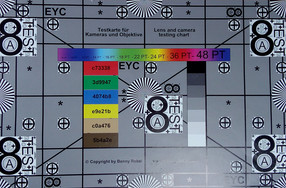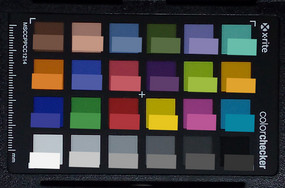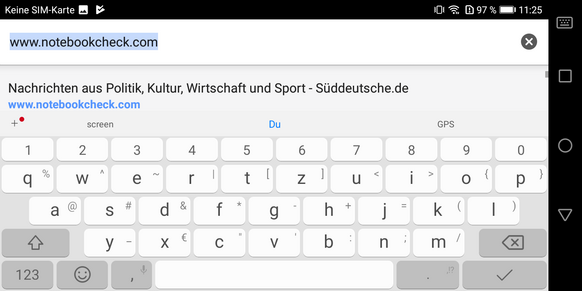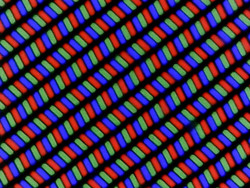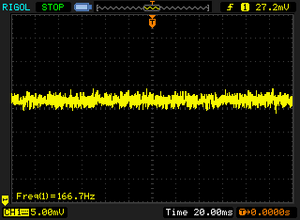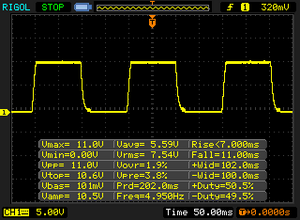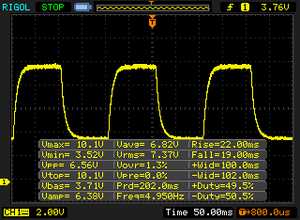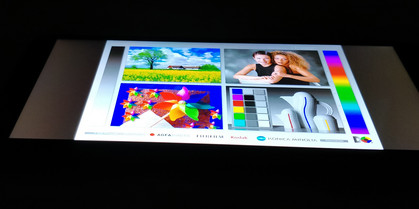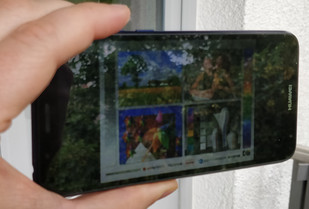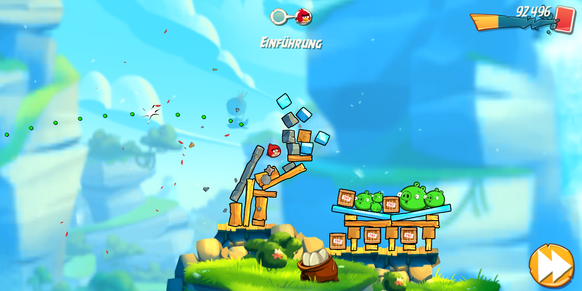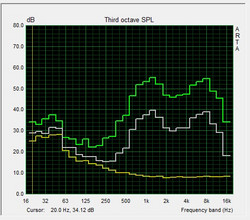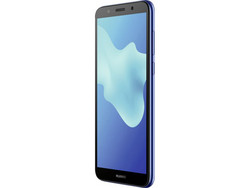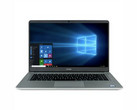Huawei Y5 2018 Smartphone Review
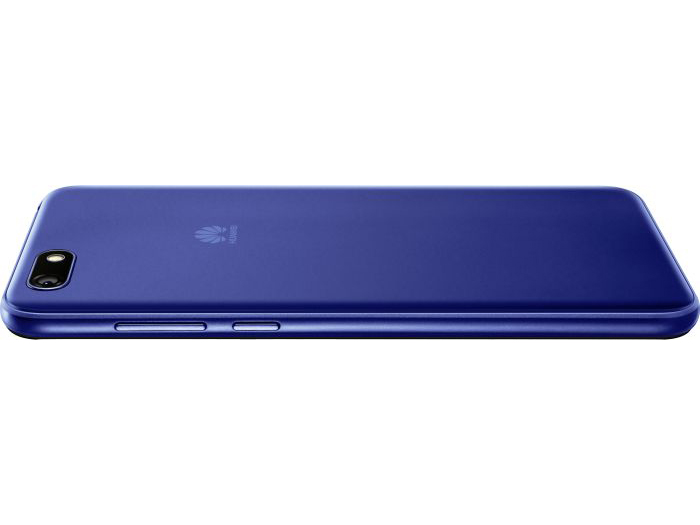
In this day and age, buyers can expect certain things from any smartphone that costs a little over 100 Euros (or dollars): Thanks to a variety of optimizations the vast majority of apps, and the Android OS itself, generally run smoothly on even the cheapest devices; the cameras take acceptable photos, as long as your expectations are not too high; and some manufacturers even house the components in high-quality cases. As a result, users expect a certain level of quality when they shell out 120 Euros (or dollars) for a phone. Huawei intends to match these expectations with the Y5 2018—a very cheap 5.45-inch smartphone with a narrow display bezel and dual-SIM capability.
But of course there are plenty of other manufacturers casting nets in this price bracket: The Sony Xperia L1 is fighting to hold its turf here, as are the Moto E4 Plus, the Umidigi A1 Pro and the somewhat more expensive Xiaomi Mi A1.
Case - Stable plastic case for the Huawei Y5
Buyers of the Huawei Y5 2018 will have to make do with a simple plastic case. In Europe, the color choices consist of black or blue. Thanks to its 18:9 display, the Huawei smartphone has a relatively narrow bezel, though other devices in this price category also offer a good screen-to-case ratio. At 145 grams (0.32 pounds), the Huawei Y5 2018 is a very lightweight smartphone. The phone's compact measurements make it well-suited for those with smaller hands. Thanks to its rounded edges, the device feels good in your hand. At a thickness of 8.3 mm (0.33 inches), the case is also built quite thin.
Besides producing a faint crackling sound when twisted, the case is very stable and seems to be of a good quality.
Connectivity - Huawei smartphone with separate microSD slot
16 GB of mass storage and 2 GB of RAM—no-one can expect more in this price bracket. The Umidigi A1 Pro and the Moto E4 Plus offer a little more RAM, otherwise this is as good as it gets. The Huawei Y5 can handle two SIM cards at once, and the device's memory can be expanded with a microSD card. Because the microSD slot is separate, it can be used in addition to the two SIM slots. The card can only be formatted as external memory; apps cannot be stored there.
Software - EMUI on the Huawei Y5
Android 8.1 serves as the operating system on this Huawei smartphone. EMUI, Huawei's proprietary user interface, sits above the Android OS. The security patches are somewhat older—dated from April 1, 2018.
The phone also comes with preinstalled commercial apps and games from third parties. Those who prefer a blank slate will need to uninstall them manually. There are some useful apps from Huawei, such as a design app that changes the look of the user interface, and an app with tips for how to use the smartphone—just to name a few.
Communication and GPS - No 5 GHz WLAN on the Huawei phone
When it comes to WLAN, the Huawei smartphone supports the standards 802.11 b/g/n. This means the Y5 cannot access the lesser-used 5 GHz band, nor can it connect to faster 802.11 ac networks. In our standardized test with a Linksys EA8500 reference router, the smartphone's performance was average; other devices that can access the 5 GHz network, like the Sony Xperia L1, are substantially faster. In the vicinity of the router, the reception is good—though wait times can be quite long when loading web images.
Huawei built in a modem with LTE Cat. 4 and the phone supports six different frequency bands. This should be sufficient for trips within Europe, but travelers to far-off destinations (such as India or China) may find that the phone cannot access the networks there. In urban areas, even within buildings the reception is quite good.
| Networking | |
| iperf3 transmit AX12 | |
| Xiaomi Mi A1 | |
| Sony Xperia L1 | |
| Umidigi A1 Pro | |
| Huawei Y5 2018 | |
| Lenovo Moto E4 Plus | |
| iperf3 receive AX12 | |
| Xiaomi Mi A1 | |
| Sony Xperia L1 | |
| Umidigi A1 Pro | |
| Huawei Y5 2018 | |
| Lenovo Moto E4 Plus | |
Indoors, the Huawei Y5 2018 cannot determine its location, but outdoors it is able to quickly ascertain its position with an accuracy of up to 5 meters (~16 feet)—a respectable achievement. There is no compass sensor, meaning the user cannot tell which direction the phone is facing in Google Maps or other map-related apps.
Our bike tour tests how well a smartphone does in practice in the realm of location services. We take a Garmin Edge 520 along for the ride—a professional navigation device for cyclists that serves as our reference. The result: The Huawei Y5 2018 is significantly less precise than the professional device, clipping curves and occasionally positioning us adjacent to our actual path. On the other hand, the accuracy is sufficient and actually a little impressive for such an inexpensive device. The smartphone usually recognized which side of the street we were on, and the divergences compared to the Garmin were not excessive.
Phone Function and Call Quality - Echo and distant voice
Huawei made a few changes to the standard Android phone app, though it remains clearly laid out and has not been altered significantly.
The call quality is low, as is only to be expected in this price bracket: The person on the other end is relatively intelligible over the ear piece, though the voice feels distant and is accompanied by an electronic echo. Our conversation partner also experienced our voice as distant and accompanied by background noise. Over the built-in speakerphone, the person on the other end sounds quiet and far-off. The sound quality of our voice was more or less the same as in the normal telephone mode.
Cameras - Decent single cameras in the Huawei Y5
An 8-megapixel camera with LED flash is located on the back side of the Huawei Y5 2018; on the front, there is a 5-megapixel lens with LED support. Those are relatively low resolutions—the devices in our comparison list all have back cameras with at least 13 megapixels.
First, we will take a look at some photos captured by the front camera: The color reproduction is reasonably good, and the sharpness is acceptable for this price bracket. Light areas bloom very quickly, however.
Photos taken with the main camera lack definition in both light and dark areas. On the other hand, the image sharpness is acceptable, and details come through quite well. In low lighting, the camera lightens the image reasonably well, but the auto-focus struggles.
The main camera records videos at 1080p. The exposure adjustment reacts quickly, if stepwise, to changes in brightness. Details are reproduced just fine. Colors, on the other hand, look somewhat too pale.
In standardized lighting conditions, colors appear a little too dark; our test chart looks over-sharpened, as evidenced by the superfluous details around objects. But the extra elements are only visible when we zoom in; overall the photos look quite good—certainly acceptable for use on social media at low resolution.
Accessories and Warranty - 24 months of warranty coverage
Besides a power supply and USB cable, the Y5's box only contains a SIM ejector tool and a quick-start guide.
The Huawei smartphone's warranty lasts 24 months in the EU. Please see our Guarantees, Return policies and Warranties FAQ for country-specific information.
Input Devices and Operation - Somewhat sluggish touchscreen
Huawei chose Swift Key as the smartphone's keyboard app. Whether the user prefers it to Google's GBoard or another keyboard app is a matter of taste, but it certainly offers a variety of settings options, themes and statistics. It is easy to type quickly on the keyboard, but due to the low system performance, sometimes it takes a while for the keyboard to appear.
The touchscreen does not work as smoothly as on other smartphones, but it is still fully functional. The menu keys are on the display; the only physical keys are the volume rocker on the right side of the case and the standby key. They do not feel particularly high-quality but function reliably.
Display - Distorted colors on the Huawei Y5
The Y5's display consists of a slightly enlarged 720p panel in 2:1 format. 5.45-inch is an unusual size, but the difference compared to a 5.5-inch screen is not noticeable. At a maximum brightness of 469.9 cd/m², the display falls in the mid-range among the competitors. The brightness distribution is 91% similar across the screen, which is quite even. In large areas of the same or similar colors, the differences in brightness are not at all conspicuous.
| |||||||||||||||||||||||||
Brightness Distribution: 91 %
Center on Battery: 475 cd/m²
Contrast: 625:1 (Black: 0.76 cd/m²)
ΔE ColorChecker Calman: 9.12 | ∀{0.5-29.43 Ø4.77}
ΔE Greyscale Calman: 12 | ∀{0.09-98 Ø5}
96.4% sRGB (Calman 2D)
Gamma: 2.342
CCT: 9861 K
| Huawei Y5 2018 IPS, 1440x720, 5.5" | Lenovo Moto E4 Plus IPS, 1280x720, 5.5" | Sony Xperia L1 IPS, 1280x720, 5.5" | Umidigi A1 Pro IPS, 1440x720, 5.5" | Xiaomi Mi A1 IPS, 1920x1080, 5.5" | |
|---|---|---|---|---|---|
| Screen | 35% | 30% | 65% | 43% | |
| Brightness middle (cd/m²) | 475 | 425 -11% | 479 1% | 594 25% | 503 6% |
| Brightness (cd/m²) | 470 | 425 -10% | 478 2% | 570 21% | 478 2% |
| Brightness Distribution (%) | 91 | 93 2% | 94 3% | 86 -5% | 88 -3% |
| Black Level * (cd/m²) | 0.76 | 0.37 51% | 0.58 24% | 0.22 71% | 0.37 51% |
| Contrast (:1) | 625 | 1149 84% | 826 32% | 2700 332% | 1359 117% |
| Colorchecker dE 2000 * | 9.12 | 4.7 48% | 4.5 51% | 6.63 27% | 3.92 57% |
| Colorchecker dE 2000 max. * | 18.86 | 8.3 56% | 7.5 60% | 13.99 26% | 7.86 58% |
| Greyscale dE 2000 * | 12 | 4.6 62% | 4.1 66% | 9.2 23% | 4.9 59% |
| Gamma | 2.342 94% | 2.17 101% | 2.03 108% | 2.24 98% | 2.223 99% |
| CCT | 9861 66% | 7445 87% | 7139 91% | 8663 75% | 7884 82% |
* ... smaller is better
Screen Flickering / PWM (Pulse-Width Modulation)
| Screen flickering / PWM detected | 166.7 Hz | ≤ 25 % brightness setting | |
The display backlight flickers at 166.7 Hz (worst case, e.g., utilizing PWM) Flickering detected at a brightness setting of 25 % and below. There should be no flickering or PWM above this brightness setting. The frequency of 166.7 Hz is relatively low, so sensitive users will likely notice flickering and experience eyestrain at the stated brightness setting and below. In comparison: 53 % of all tested devices do not use PWM to dim the display. If PWM was detected, an average of 8081 (minimum: 5 - maximum: 343500) Hz was measured. | |||
At less than 25% brightness, we measured a substantial display flicker that could cause problems for sensitive users. If you have had problems with displays in the past, it would be a good idea to try out the Huawei Y5 at low brightness in the store before you buy.
In our test with a spectrophotometer and the CalMAN software, we see that the display has a visible blue cast and inaccurately reproduced colors. Blue tones in particular are greatly overrepresented.
Display Response Times
| ↔ Response Time Black to White | ||
|---|---|---|
| 18 ms ... rise ↗ and fall ↘ combined | ↗ 7 ms rise | |
| ↘ 11 ms fall | ||
| The screen shows good response rates in our tests, but may be too slow for competitive gamers. In comparison, all tested devices range from 0.1 (minimum) to 240 (maximum) ms. » 39 % of all devices are better. This means that the measured response time is better than the average of all tested devices (20.2 ms). | ||
| ↔ Response Time 50% Grey to 80% Grey | ||
| 41 ms ... rise ↗ and fall ↘ combined | ↗ 22 ms rise | |
| ↘ 19 ms fall | ||
| The screen shows slow response rates in our tests and will be unsatisfactory for gamers. In comparison, all tested devices range from 0.165 (minimum) to 636 (maximum) ms. » 64 % of all devices are better. This means that the measured response time is worse than the average of all tested devices (31.6 ms). | ||
From flat angles, the image on the IPS display is still easily recognizable, but the colors are faintly distorted. The Huawei Y5 smartphone is usable outdoors, though not under direct sunlight. In such bright conditions, the mediocre display brightness is too weak to outshine the intense surface reflections. But if the user retreats to a shadier spot, the display image is easily visible.
Performance - Huawei smartphone's performance typical for its class
The Mediatek MT6739, a relatively modern SoC, has four cores and a clock speed of up to 1.5 GHz—a typical level of performance for this price bracket. Time and again, the Huawei Y5 2018 is somewhat faster in our benchmarks than many of the competitors in our comparison list; the somewhat more expensive Xiaomi Mi A1, on the other hand, clearly possesses more performance power.
A PowerVR GE8100 serves as the system's graphics solution. The GPU clocks at 570 MHz and offers fairly weak performance, as one would expect of a chip in this price range.
| AnTuTu v6 - Total Score (sort by value) | |
| Huawei Y5 2018 | |
| Lenovo Moto E4 Plus | |
| Sony Xperia L1 | |
| Umidigi A1 Pro | |
| Xiaomi Mi A1 | |
| Average Mediatek MT6739 (25012 - 38060, n=13) | |
| AnTuTu v7 - Total Score (sort by value) | |
| Huawei Y5 2018 | |
| Umidigi A1 Pro | |
| Xiaomi Mi A1 | |
| Average Mediatek MT6739 (26874 - 46951, n=13) | |
| PCMark for Android | |
| Work performance score (sort by value) | |
| Huawei Y5 2018 | |
| Lenovo Moto E4 Plus | |
| Sony Xperia L1 | |
| Umidigi A1 Pro | |
| Xiaomi Mi A1 | |
| Average Mediatek MT6739 (3742 - 5136, n=11) | |
| Work 2.0 performance score (sort by value) | |
| Huawei Y5 2018 | |
| Lenovo Moto E4 Plus | |
| Sony Xperia L1 | |
| Umidigi A1 Pro | |
| Xiaomi Mi A1 | |
| Average Mediatek MT6739 (2467 - 5377, n=16) | |
| GFXBench 3.0 | |
| on screen Manhattan Onscreen OGL (sort by value) | |
| Huawei Y5 2018 | |
| Lenovo Moto E4 Plus | |
| Sony Xperia L1 | |
| Umidigi A1 Pro | |
| Xiaomi Mi A1 | |
| Average Mediatek MT6739 (4.4 - 10, n=16) | |
| Average of class Smartphone (18 - 166, n=155, last 2 years) | |
| 1920x1080 1080p Manhattan Offscreen (sort by value) | |
| Huawei Y5 2018 | |
| Lenovo Moto E4 Plus | |
| Sony Xperia L1 | |
| Umidigi A1 Pro | |
| Xiaomi Mi A1 | |
| Average Mediatek MT6739 (2.2 - 2.8, n=14) | |
| Average of class Smartphone (12 - 606, n=154, last 2 years) | |
| GFXBench 3.1 | |
| on screen Manhattan ES 3.1 Onscreen (sort by value) | |
| Huawei Y5 2018 | |
| Lenovo Moto E4 Plus | |
| Sony Xperia L1 | |
| Umidigi A1 Pro | |
| Xiaomi Mi A1 | |
| Average Mediatek MT6739 (2.6 - 6.7, n=16) | |
| Average of class Smartphone (11 - 166, n=155, last 2 years) | |
| 1920x1080 Manhattan ES 3.1 Offscreen (sort by value) | |
| Huawei Y5 2018 | |
| Lenovo Moto E4 Plus | |
| Sony Xperia L1 | |
| Umidigi A1 Pro | |
| Xiaomi Mi A1 | |
| Average Mediatek MT6739 (1.3 - 1.7, n=16) | |
| Average of class Smartphone (8.4 - 413, n=154, last 2 years) | |
| GFXBench | |
| on screen Car Chase Onscreen (sort by value) | |
| Huawei Y5 2018 | |
| Umidigi A1 Pro | |
| Xiaomi Mi A1 | |
| Average Mediatek MT6739 (1.1 - 2.6, n=15) | |
| Average of class Smartphone (5.5 - 154, n=157, last 2 years) | |
| 1920x1080 Car Chase Offscreen (sort by value) | |
| Huawei Y5 2018 | |
| Umidigi A1 Pro | |
| Xiaomi Mi A1 | |
| Average Mediatek MT6739 (0.6 - 0.91, n=14) | |
| Average of class Smartphone (3.5 - 239, n=156, last 2 years) | |
Sized up against the other devices in our comparison list, the Y5's surfing performance is average. It is often necessary to wait for images or media content to load.
| JetStream 1.1 - Total Score | |
| Xiaomi Mi A1 | |
| Umidigi A1 Pro (Chrome 66) | |
| Huawei Y5 2018 (Chrome 67) | |
| Sony Xperia L1 (Chrome 59) | |
| Average Mediatek MT6739 (13.4 - 18.5, n=14) | |
| Lenovo Moto E4 Plus (Chrome 60) | |
| Octane V2 - Total Score | |
| Average of class Smartphone (2228 - 126661, n=194, last 2 years) | |
| Xiaomi Mi A1 | |
| Umidigi A1 Pro (Chrome 66) | |
| Huawei Y5 2018 (Chrome 67) | |
| Average Mediatek MT6739 (2093 - 3386, n=15) | |
| Sony Xperia L1 (Chrome 59) | |
| Lenovo Moto E4 Plus (Chrome 60) | |
| Mozilla Kraken 1.1 - Total | |
| Lenovo Moto E4 Plus (Chrome 60) | |
| Huawei Y5 2018 (Chrome 67) | |
| Average Mediatek MT6739 (13599 - 18154, n=16) | |
| Umidigi A1 Pro (Chrome 66) | |
| Sony Xperia L1 (Chrome 59) | |
| Xiaomi Mi A1 | |
| Average of class Smartphone (257 - 28190, n=154, last 2 years) | |
* ... smaller is better
Access to the internal eMMC storage is slow, much like the other devices in this price bracket. The Xiaomi Mi A1 offers somewhat faster access speeds, but in general, quicker UFS storage media are only available in considerably more expensive smartphones. In our tests with a Toshiba Exceria Pro M501 reference microSD card, the Huawei Y5 proves to be quite fast for its class, though it cannot even begin to approach the microSD card's maximum possible speeds.
| Huawei Y5 2018 | Lenovo Moto E4 Plus | Sony Xperia L1 | Umidigi A1 Pro | Xiaomi Mi A1 | Average 16 GB eMMC Flash | Average of class Smartphone | |
|---|---|---|---|---|---|---|---|
| AndroBench 3-5 | 4% | -45% | -7% | 65% | -31% | 2024% | |
| Sequential Read 256KB (MB/s) | 245.3 | 194.4 -21% | 181.9 -26% | 269.2 10% | 277.4 13% | 164.5 ? -33% | 2235 ? 811% |
| Sequential Write 256KB (MB/s) | 47.8 | 42 -12% | 40.2 -16% | 44.4 -7% | 202.4 323% | 43 ? -10% | 1871 ? 3814% |
| Random Read 4KB (MB/s) | 39 | 19.15 -51% | 13.6 -65% | 29.6 -24% | 78.1 100% | 21.7 ? -44% | 297 ? 662% |
| Random Write 4KB (MB/s) | 11.8 | 29.4 149% | 5.9 -50% | 10.2 -14% | 7.19 -39% | 8.08 ? -32% | 343 ? 2807% |
| Sequential Read 256KB SDCard (MB/s) | 81.7 ? | 66.3 -19% | 37.81 ? -54% | 81 ? -1% | 83.6 2% | 59.1 ? -28% | |
| Sequential Write 256KB SDCard (MB/s) | 62.3 ? | 46.6 -25% | 26.25 ? -58% | 58.8 ? -6% | 57.9 -7% | 39.8 ? -36% |
Games - Good enough for simple games
The smartphone is able to render 2D games like Angry Birds 2 smoothly, and simple 3D games like Temple Run 2 also run without a problem. The graphics unit also supports some graphics APIs like OpenGL 4.0 (which is reasonably current), meaning users should be able to continue playing the newest games over the next few years. Those who like to play more graphics-heavy games, such as Arena of Valor or PUBG Mobile, will need to pay more for their smartphones. The Huawei Y5 is too weak for these sorts of titles.
There is no lag in the smartphone's reaction to input via the position sensor or touchscreen.
Emissions - Remains relatively cool, weak speaker in the Huawei Y5
At 37.7 °C (99.9 °F) on the back side, the smartphone's maximum temperature is palpable, but it is neither critical nor uncomfortable. The maximum temperatures are substantially lower in idle mode, which means the smartphone can be used without a problem here.
(+) The maximum temperature on the upper side is 37.1 °C / 99 F, compared to the average of 35.2 °C / 95 F, ranging from 21.9 to 247 °C for the class Smartphone.
(+) The bottom heats up to a maximum of 37.7 °C / 100 F, compared to the average of 34 °C / 93 F
(+) In idle usage, the average temperature for the upper side is 31 °C / 88 F, compared to the device average of 32.9 °C / 91 F.
Speaker
The Huawei Y5 2018's speaker is hardly visible at first—until it becomes apparent that the speaker is one and the same with the earpiece. The sound streams forward as a result, which is a good thing—but the speaker is very quiet and only reaches 63.6 dB(A) at maximum volume. The sound is quite thin and dominated by high tones; lower mid-tones are almost entirely absent. Anyone who uses the speaker frequently will almost certainly be dissatisfied. Alternatively, users can stream over Bluetooth or plug a headset/external speakers into the 3.5 mm jack. Both transmissions generate a clean sound.
Huawei Y5 2018 audio analysis
(-) | not very loud speakers (63.6 dB)
Bass 100 - 315 Hz
(-) | nearly no bass - on average 21.8% lower than median
(+) | bass is linear (6.2% delta to prev. frequency)
Mids 400 - 2000 Hz
(±) | higher mids - on average 6% higher than median
(±) | linearity of mids is average (11.9% delta to prev. frequency)
Highs 2 - 16 kHz
(+) | balanced highs - only 3.4% away from median
(+) | highs are linear (5.9% delta to prev. frequency)
Overall 100 - 16.000 Hz
(±) | linearity of overall sound is average (27.8% difference to median)
Compared to same class
» 72% of all tested devices in this class were better, 5% similar, 23% worse
» The best had a delta of 11%, average was 35%, worst was 134%
Compared to all devices tested
» 84% of all tested devices were better, 3% similar, 13% worse
» The best had a delta of 4%, average was 24%, worst was 134%
Xiaomi Mi A1 audio analysis
(+) | speakers can play relatively loud (86.2 dB)
Bass 100 - 315 Hz
(-) | nearly no bass - on average 29.7% lower than median
(±) | linearity of bass is average (11.2% delta to prev. frequency)
Mids 400 - 2000 Hz
(+) | balanced mids - only 3.2% away from median
(+) | mids are linear (5.2% delta to prev. frequency)
Highs 2 - 16 kHz
(+) | balanced highs - only 3.2% away from median
(+) | highs are linear (3.1% delta to prev. frequency)
Overall 100 - 16.000 Hz
(±) | linearity of overall sound is average (19.2% difference to median)
Compared to same class
» 25% of all tested devices in this class were better, 8% similar, 66% worse
» The best had a delta of 11%, average was 35%, worst was 134%
Compared to all devices tested
» 45% of all tested devices were better, 7% similar, 47% worse
» The best had a delta of 4%, average was 24%, worst was 134%
Battery Life - Good battery life
When it comes to energy consumption, the Huawei Y5 is well-designed. Most of the numbers look good. The minimum power draw in idle and the draw under load are the only results that are somewhat elevated, and even so, they still fall in the mid-range among the competition.
| Off / Standby | |
| Idle | |
| Load |
|
Key:
min: | |
| Huawei Y5 2018 3020 mAh | Lenovo Moto E4 Plus 5000 mAh | Sony Xperia L1 2620 mAh | Umidigi A1 Pro 3150 mAh | Xiaomi Mi A1 3080 mAh | Average Mediatek MT6739 | Average of class Smartphone | |
|---|---|---|---|---|---|---|---|
| Power Consumption | 26% | 3% | -15% | -38% | -7% | -1% | |
| Idle Minimum * (Watt) | 1.3 | 0.89 32% | 0.89 32% | 1.8 -38% | 2.2 -69% | 1.522 ? -17% | 0.847 ? 35% |
| Idle Average * (Watt) | 1.7 | 1.87 -10% | 2.05 -21% | 2.3 -35% | 2.8 -65% | 2.17 ? -28% | 1.446 ? 15% |
| Idle Maximum * (Watt) | 2.5 | 1.98 21% | 2.18 13% | 3.2 -28% | 3.4 -36% | 2.86 ? -14% | 1.63 ? 35% |
| Load Average * (Watt) | 5.5 | 3.04 45% | 6.02 -9% | 4.7 15% | 6.2 -13% | 4.73 ? 14% | 6.95 ? -26% |
| Load Maximum * (Watt) | 6.8 | 4.01 41% | 6.94 -2% | 6 12% | 7.2 -6% | 5.99 ? 12% | 11.3 ? -66% |
* ... smaller is better
Battery Life
The Huawei smartphone lasted a good 11:25 hours in our WLAN test. This is a good result, especially given that the 3020 mAh battery is somewhat small. As a result, buyers can have confidence that the Huawei Y5 will last through a workday. With more infrequent use, the device could even last multiple days on a single charge. The little power supply delivers a maximum of 5 watts and needs about 2 hours to fully charge the Huawei smartphone.
| Huawei Y5 2018 3020 mAh | Lenovo Moto E4 Plus 5000 mAh | Sony Xperia L1 2620 mAh | Umidigi A1 Pro 3150 mAh | Xiaomi Mi A1 3080 mAh | |
|---|---|---|---|---|---|
| Battery runtime | 15% | -17% | -11% | -7% | |
| WiFi v1.3 (h) | 11.4 | 13.1 15% | 9.5 -17% | 10.1 -11% | 10.6 -7% |
| Reader / Idle (h) | 23.3 | ||||
| H.264 (h) | 10.9 | ||||
| Load (h) | 3.7 |
Pros
Cons
Verdict - Decent budget smartphone
Huawei cut costs all over the place for the Huawei Y5 2018: The earpiece that simultaneously serves as a mediocre speaker, the simple plastic case, and the missing 5 GHz WLAN band are a few examples. But in exchange, buyers will pay less than 120 Euros (~$140; US version ~$120) for a smartphone with a modern thin bezel, good battery life and decent single cameras.
A low price and decent features: The Huawei Y5 2018 is a budget phone with dignity.
Given that content and apps frequently take time to load, buyers cannot be performance junkies—but overall, the Huawei Y5 2018 offers a good price-performance ratio. Those who desire better hardware at the same price can take a look at the Umidigi A1 Pro, which supports 5 GHz WLAN, has a quick-charge function, and it is dressed up in a snazzy case. But those features come in exchange for slightly shortened battery life.
Huawei Y5 2018
- 07/17/2018 v6 (old)
Florian Wimmer


